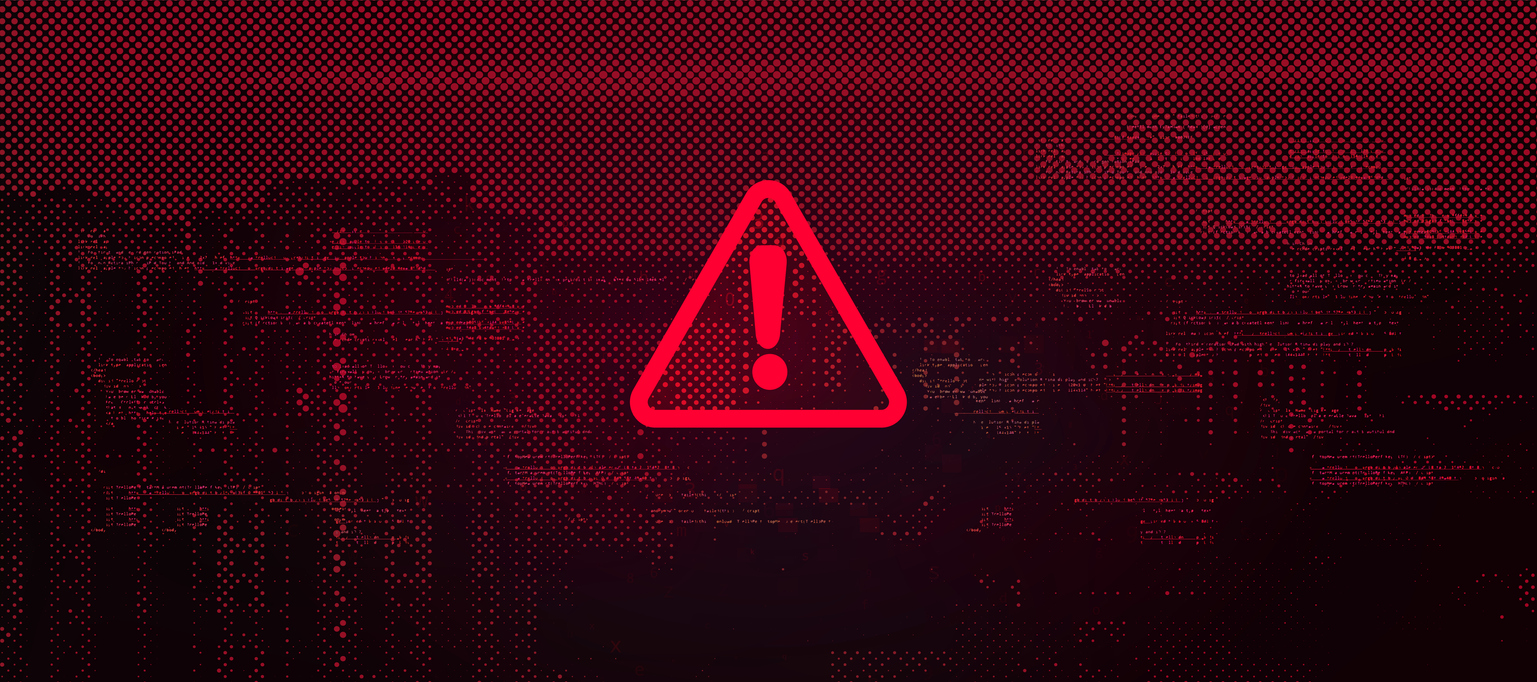Table of Contents

Share this entry

To stay ahead in the cloud, you need security solutions that can keep up. so how can you tell if your cloud security tools are beginning to show they need optimization or a replacement? It’s rare to find an organization using only cloud-native tools, or even just some, for its security operations. Yet simultaneously, many organizations still rely on legacy solutions that were designed before VM security existed or have security solutions in place that no longer fit their environment. Even worse, many have just given up and settled for inferior security.
Security is a top priority for any enterprise, but many organizations are not aware of the signs that their current cloud solution has failed them. The signs of security failure are there, but they are either going unnoticed or they are being ignored. Or maybe organizations don’t have the security box checked like they think they do. Either situation is perilous, and without swift action, the cost of time and resources – and the immediate need for a new solution or an optimization – can really mount up. So, what are the key signs that your current cloud solution is failing? And how do you recognize them before it’s too late?

Warning Sign: Technology begins to introduce risk
Your security technology may have been heralded as the solution to all your organization’s ills – and for a while, it was exactly that. But now, even the staunchest champions of the solution are withdrawing their support, and operations are finding ways to avoid using the cloud security solution altogether.
Dev teams are finding other ways to go around security or are ignoring the security tools outright. This will result in more risk in the CI/CD pipeline and more blind spots in misconfigurations and vulnerabilities.
Increased risk is one of the key signs that your tech is failing and that action needs to be taken. Once teams are working around controls, point solutions and existing cloud security tech, any efficiencies the solution previously offered are lost. And it’s probably costing you more to keep things running with more risk.

Warning Sign: Current tool can’t grow
As your cloud grows, so do the complexities in your cloud. While the cloud service provider’s controls remain essential, they also become insufficient in mitigating risk. The challenges of managing controls across diverse cloud environments with different approaches, capabilities, UIs, and architectures make it impractical and unsustainable to rely on cloud service providers’ controls alone. Even those organizations that are single-cloud can quickly become multi-cloud due to business requirements, developer preference, or M&A activity. The goal of enterprise security should be to adopt a cloud security approach that enables and supports rapid business shifts, and flexibility and is forward-looking. This security approach accelerates corporate innovation and profitability.

Warning Sign: You have multiple-point solutions
There are instances when some organizations go overboard installing various services and standalone solutions in an earnest bid to enhance productivity and increase security. However, this quickly backfires on the organization as navigating clouds, finding relevant data, and accessing information easily becomes challenging. All this complexity is time-consuming, leading to unproductivity. Time and data are both money today, and that is why it is essential for you to make a strategic decision regarding a comprehensive cloud security solution as opposed to investing in multiple-point solutions.

Warning Sign: High support rate
Your cloud team will be able to tell you when your cloud security solution is failing when it comes to usability. A clear sign will be when the rate of dev management support increases and when tasks become increasingly difficult to perform or get flat-out ignored ( alert fatigue.) Another clear sign is the slowed pace of development, with security coming into the end of a development cycle to course correct security issues.
When this happens, support tickets will increase, issues in the CI/CD pipeline will increase, and if they are not resolved quickly, security and dev teams will lose confidence. When that happens, tickets may decline, but not for reasons that are good, more like missing real security risks. Or, dev teams will typically turn to workarounds that leave security blind spots.
If any of these workarounds are happening, your security solution may have seen better days and has become dated and too cumbersome to work within your current environment.
Communication is key here. You want to be able to have a continuous feedback cycle to reduce risks and raise issues before they start impacting operations. It will help to identify risks by their correct level of sensitivity and update your tech stack to meet your cloud security operations.

Warning Sign: Applying automation to everything.
Automation is a great way to help optimize your business processes and help your team feel motivated, but automation is all too easy to misuse. Automation without context-rich insights could cause more damage than it solves when it comes to cloud security risk. If automation is applied to everything, how do you solve the right problems and didn’t automate problems into new risks? When you don’t use automation correctly, it wastes time and resources, as well as causes bigger risks. Avoiding this automation misuse means knowing what not to automate as much as what to automate.

Warning Sign: Inconsistencies in the tech stack
Cloud security technology should be in harmony with each other and the various areas of the organization, including operations and security. Your cloud security should serve to unify and not divide the integrating departments, multi-clouds, and your business objectives. When there is any inconsistency, there will be significant challenges that you will need to deal with daily. These challenges are a big sign that your organization needs a cloud security platform that can come into play.
Whether it is for a security or an operations team, your cloud security platform should be able to optimize efficiencies, decrease risks, reduce serious issues, and automate prevention and remediation for common mistakes, all to meet your core business objectives.

Warning Sign: Lack of new innovation
You’d expect your cloud security solution provider to be leading the pack in new features and improving your overall user experience to create even more value for your organization. If you do not see these investments, it is time to ask questions about both your cloud security provider and your security team.
Being an admin can be hard work, especially when there is a stream of new releases to keep up with. If you do not see new features/functionalities, it may be that your administrator is overwhelmed and there are new features that have never been turned on.
If that is not the case, and your solution is not keeping up with other cloud security platforms, then it’s a clear sign that your provider’s focus is elsewhere or they are having difficulty developing new functionalities.
Both situations should be a red flag to your organization. You should set the wheels in motion to optimize what you have or determine if it is time to test the market for a new cloud security solution.

Warning Sign: ROI less than expected
Before you started out on this journey with your chosen provider, you created a detailed business case of what you expected in terms of outcomes from your new cloud security solution. You probably broke out the soft costs from the hard costs and knew what processes the tech would help to improve and how it would increase efficiencies in your organization.
These expected benefits – hard dollar savings, employee time, increased security, resources, and removal of unnecessary or duplicated processes – could be quantified with a monetary value. This, in turn, allowed you to calculate your ROI.
However, as time goes on, it’s become clear that the level of expected benefits isn’t being delivered. The ROI for the cloud security solution isn’t being met, and it’s time to understand why. There could be several factors, but all of this is a further sign that your current cloud security solution is no longer a fit.

Warning Sign: Wandering solution roadmap
Your cloud security technology journey may not have an endpoint by its very nature, but it should at least have a clear direction. This would be identified at the outset of your selection process, complete with clear goals and initiatives, helping to determine which cloud-native solution would be selected.
Later you may find that what was once their focus is no longer. Maybe you selected your provider due to their commitment to your industry or their commitment to a certain product road map. It is not uncommon for plans to change and for tech companies to change their focus for various reasons. Is this enough reason to leave and start looking elsewhere? It might depend on how many other items on the list is currently plaguing your operations. If they have changed direction and are focusing on industries and organizations that don’t resemble you, it may be time to start looking elsewhere before things worsen.
Conclusion
Keep these signs of a failing cloud security solution in mind. You should then be able to avoid being encumbered with an ailing solution and instead, remain as close to the cutting edge as you can with proper cloud security.
If you’re looking for a total cloud security solution, consider Sonrai Security. Sonrai Dig’s differentiator is bringing identity and data to the center of your cloud security strategy. This deep visibility into all your data, identities, workloads, platform, and posture strengthens innovation and supports cloud growth.
If you’re ready to upgrade your security beyond point solutions and cloud-specific services, explore our solution.
—
This blog was originally published 9/22 on VMBlog.com





